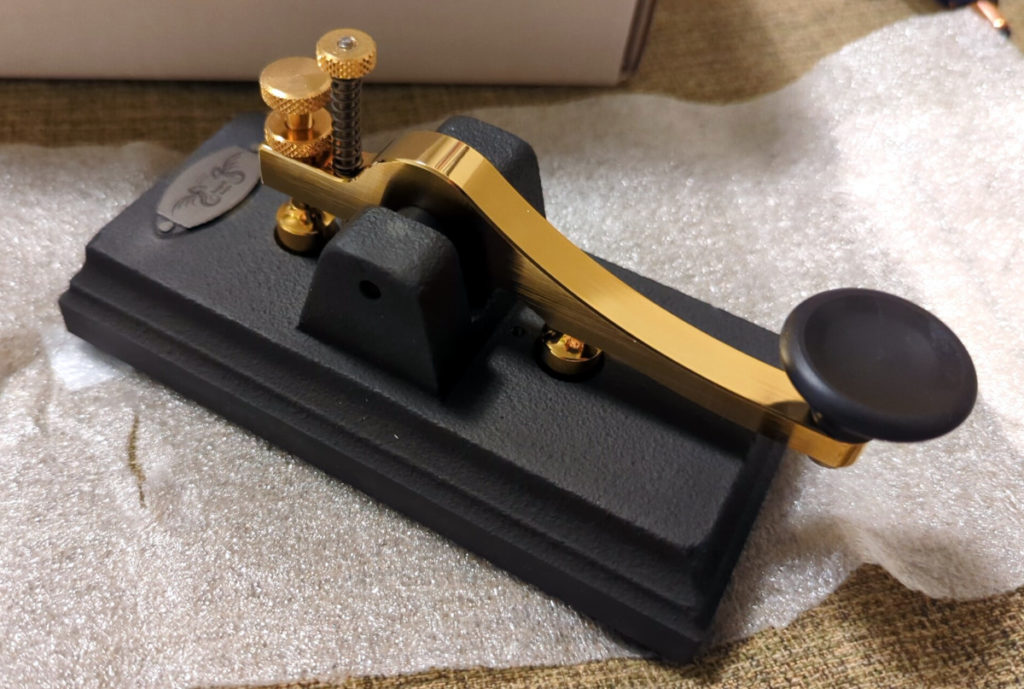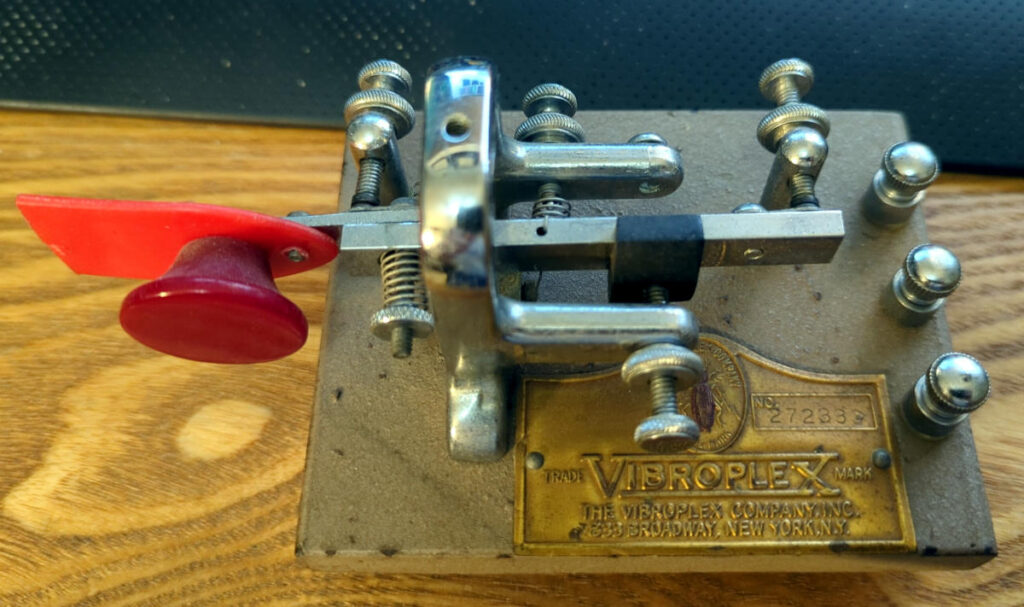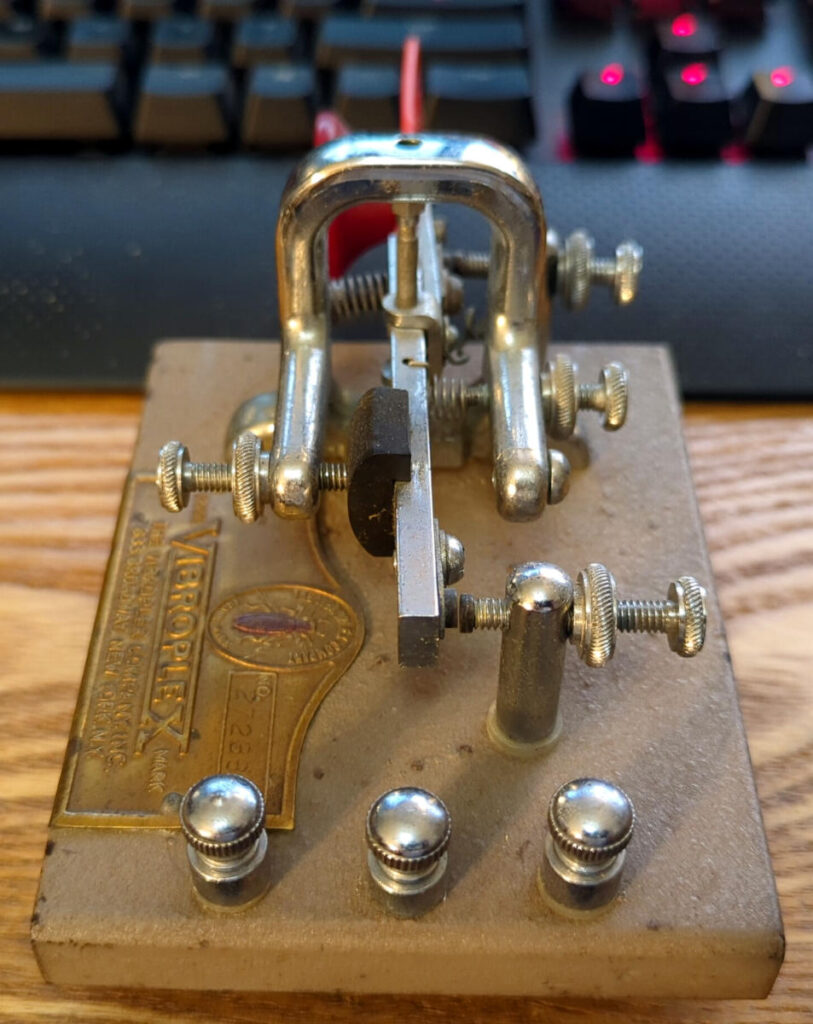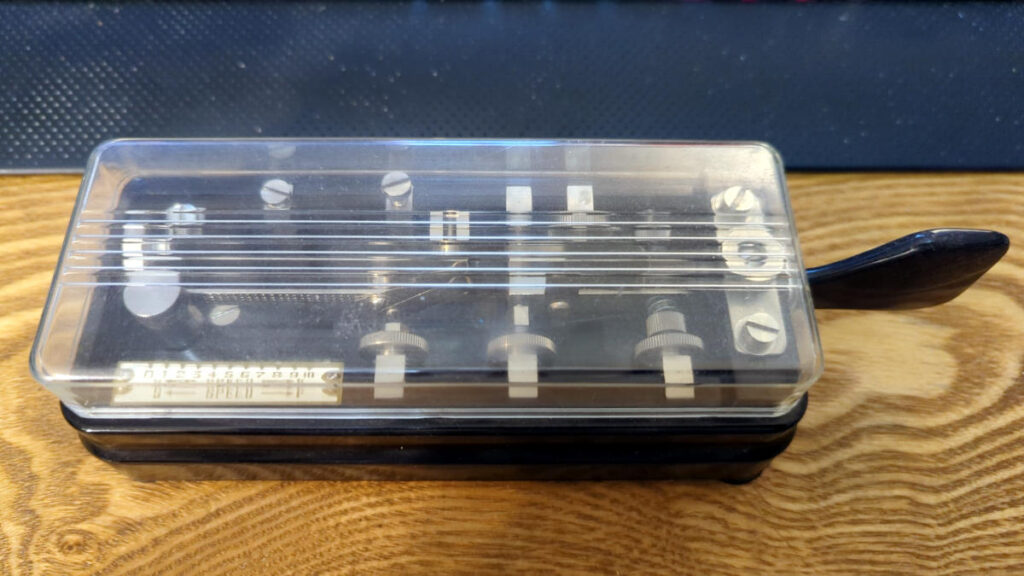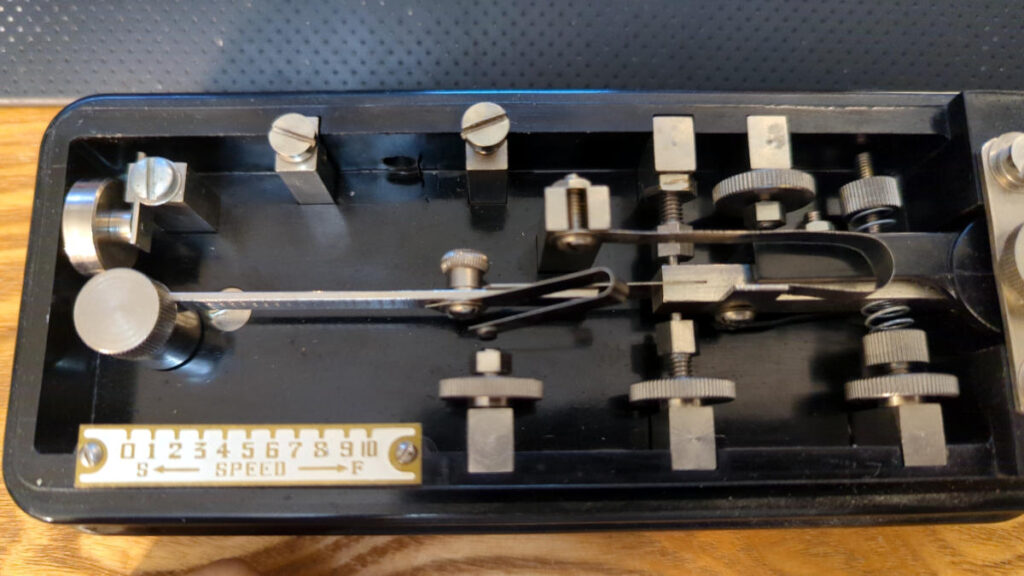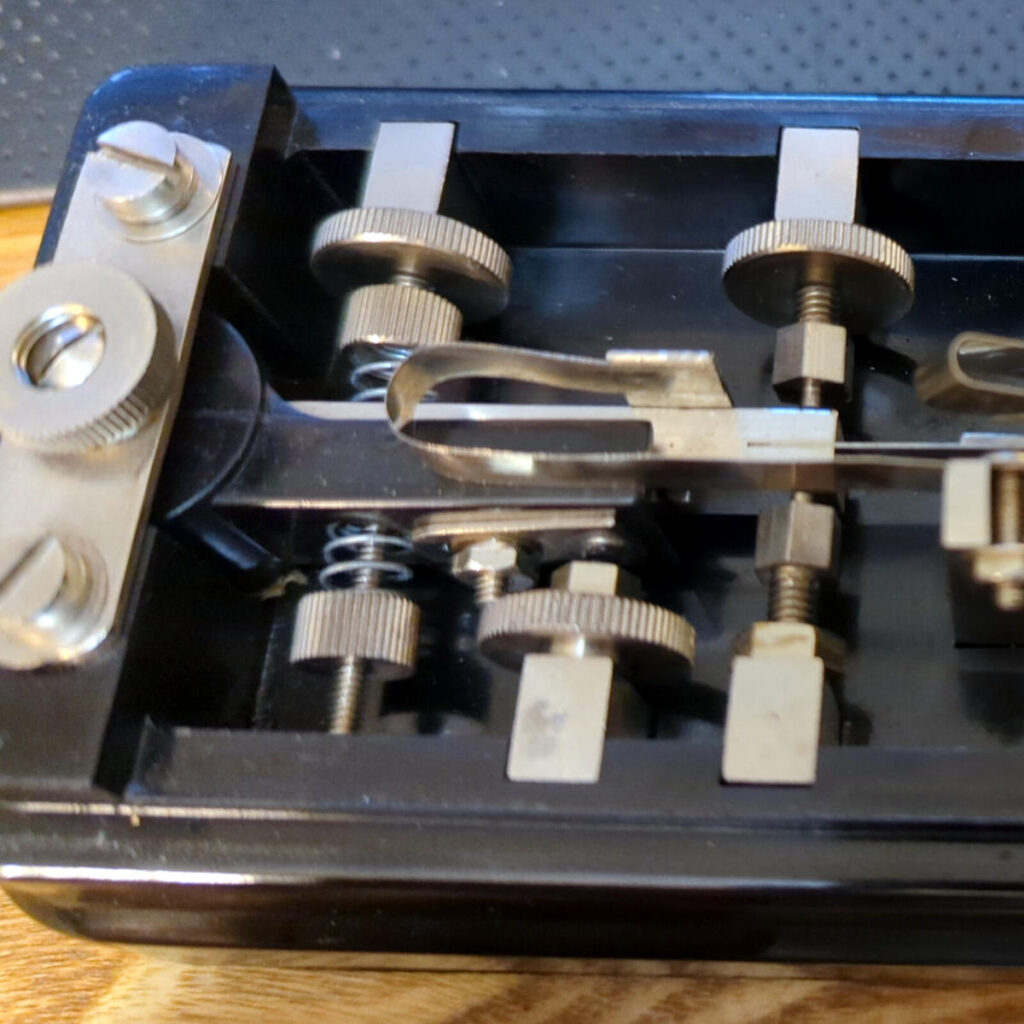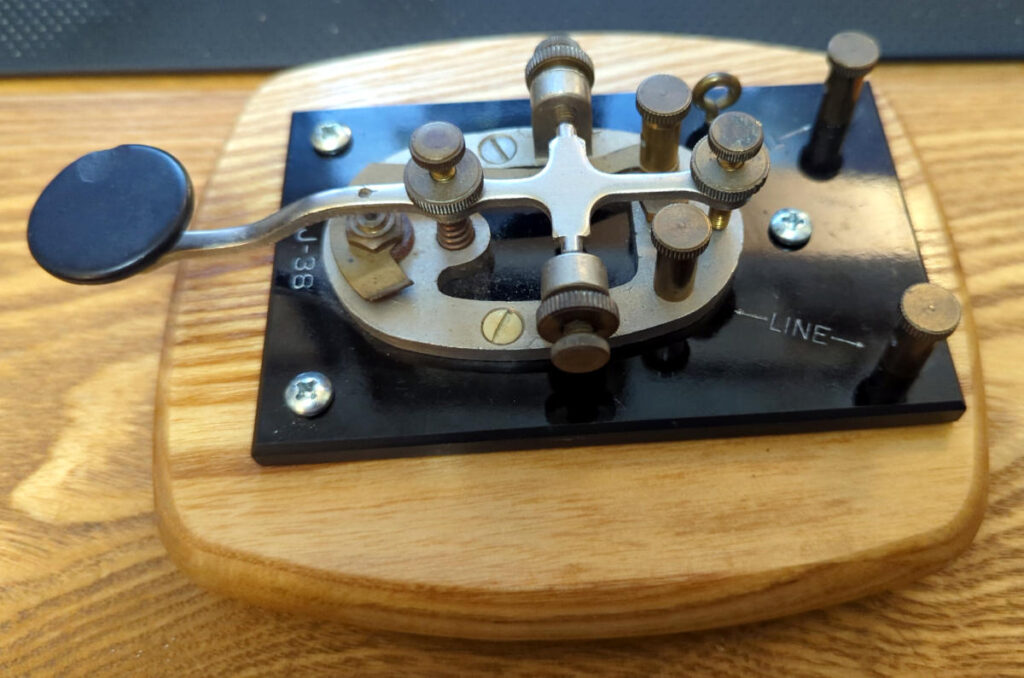The Begali Camelback is the newest addition to my straight key collection. I had been wanting to get a Begali straight key for a while and finally got one at Hamcation last year.
If any company can lay claim to being the Cadillac of CW key makers, I’d say it would be Begali. The Camelback isn’t their most expensive key, but it’s still beautifully made and crafted. It’s a nicely designed key with a simple, elegant aesthetic. It is without question my favourite straight key in my collection to use.
The Camelback weighs in at a hefty 1.8 kg (4 lbs), by far the heaviest of anything in my collection. The weight means it’s not moving anywhere on my desk while I’m using it which is good because you definitely don’t want this thing sliding off your desk.
Two knobs at the rear of the key make it easy to adjust the contact spacing and spring tension to fit your preference.
Like most straight keys, it’s pretty simple and there’s not much to it. The wiring connections are made by soldering wires to terminals in a recessed channel at the bottom of the base. The cable is routed through the channel to the back and makes things nice and tidy.
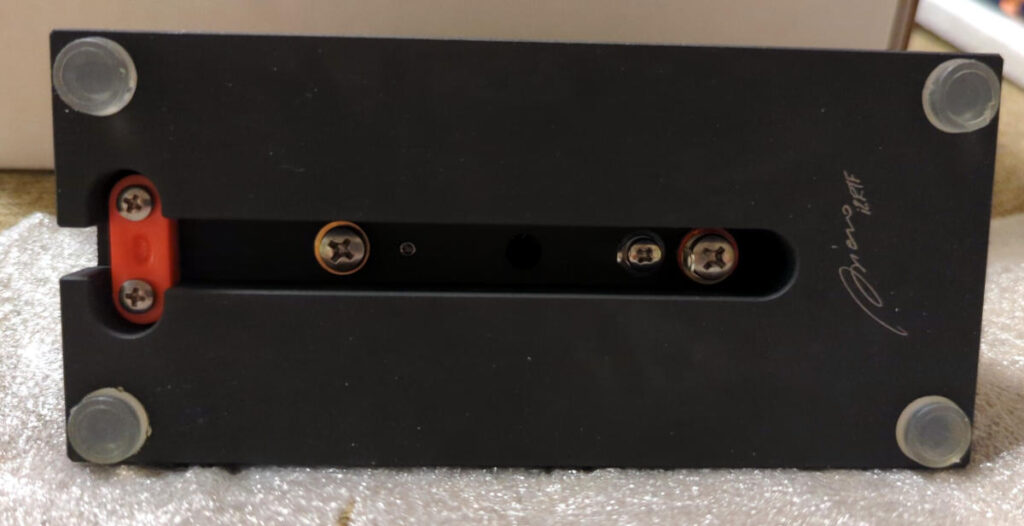
It makes a satisfying thunk-y sound while I’m tapping out Morse code, as opposed to the more clacky sound that the J-38 makes. This is just a really comfortable key to use.
